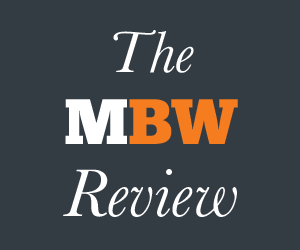
The MBW Review offers our take on some of the music biz’s biggest recent goings-on. This time, we delve back into BuzzAngle‘s US industry report for 2018 to see how major-league hits are faring against their less-blockbuster equivalents on streaming services . The MBW Review is supported by Instrumental.
It was always going to be a bold claim.
In March last year, Spotify CEO Daniel Ek told investors:“Our mission is to enable one million artists to live off their work.”
As MBW pointed out at the time, this was a lofty ambition.
Ek himself noted that 22,000 artists on Spotify were amongst what he termed the “top tier” of revenue generation on the platform.
With over 3m recording artists on Spotify in in total, these high-earners therefore equated to less than 1% of all acts on the service.
Yet to give Ek his due, the goal of ensuring more musicians are earning a significant amount of money on streaming services is obviously a commendable one.
And, according to the latest stats, it’s genuinely starting to happen.
Within BuzzAngle’s newly-issued 2018 industry report, the following important graph is presented:

It shows the effective market share of the most-streamed songs in the United States last year across all plays on audio platforms.
One obvious takeaway from the chart will instantly trouble indie artists and labels: the top 500,000 tracks on audio streaming services claimed 92.4% of all plays in the year. Yet before outrage takes hold amongst this community, this stat warrants a little further contemplation.
The overall number of US-based, on-demand audio streaming plays rose 41.8% in 2018, according to BuzzAngle – up to 534.62bn.
This means those top 500,000 tracks were played 493.99bn times last year, while the remainder of music, with its 7.6% market share, was played 40.63bn times.
In BuzzAngle’s stats for the previous year (2017), the top 500,000 tracks claimed 93.6% of all on-demand audio streams in the US, with the remainder on 6.4%. There were 376.92bn US-based audio streaming plays in the US in 2017, according to BuzzAngle, giving that year’s top 500,000 tracks 352.8bn streams, with all other music claiming 24.12bn.
The interesting bit: in 2017, the USA’s top 500,000 tracks racked up 14.6-times as many audio streams as every other piece of music. In 2018, however, this multiple had fallen significantly, down to 12.2.
This hints at an important trend – one which, as we climb further towards the top of the blockbuster hit charts, becomes surprisingly pronounced.

According to BuzzAngle, the Top 50 most-streamed songs in 2018 claimed just 0.7% of all audio streams – equivalent to 3.74bn plays (ie. 0.7% of 534.62bn).
In 2017, however, the market share of these Top 50 songs was over five times as big (3.9%), at 14.7bn plays (ie. 3.9% of 376.92bn).
You see what happened?
Despite on-demand audio streaming’s overall volume growing by 41.8% in the US in 2018, the actual number of plays dedicated to the Top 50 tracks fell harshly – down by a pretty shocking 74.6%.
This wasn’t expected, judging by previous trends: according to BuzzAngle, the Top 50 tracks in 2016 claimed a round 4% of the total number of audio streams (250.73bn) – working out at 10.03bn, or over three times 2018’s total.
Just look at how this mega-hit domination collapsed in 2018:

What if all the Top 10-charting hits in the United States lost considerable market share on streaming services in 2018? Wouldn’t that be good news for those factions (hello, indies!) who want to see streaming’s power trickle further down the pyramid of mainstream popularity?
Well, think on this: the maximum number of tracks which can rotate through a Top 10 weekly chart (like the Billboard Hot 100, for example) within a year is 520. (That’s 52 weeks, times 10 tracks.)
Obviously, the real number is much smaller – hit songs are hits for a reason, and hang around at the top of such rankings. Yet what we can say with some certainty is that the annual Top 500 biggest audio streaming tracks in the States last year should cover every entry within the weekly Top 10 biggest streaming hits of 2018. Right? Right.
BuzzAngle pegs the market share percentage of the Top 500 tracks on on-demand audio streaming services in the US last year at 10.7%.
This declined dramatically versus the 14.6% share the Top 500 enjoyed in 2017.
How does this look in real terms?
In 2017, the Top 500 most-streamed songs, according to BuzzAngle data crunched by MBW, were played 55.03bn times (ie. 14.6% of 376.9bn).
In 2018, the Top 500 most-streamed songs, according to BuzzAngle data crunched by MBW, were played 57.2bn times (ie. 10.7% of 534.62bn).
In other words (give or take a couple of billion streams): pretty much all of the growth in the US audio streaming market last year came outside the Top 500 tracks (aka outside the weekly Top 10 chart).

In its yearly report (download here), BuzzAngle offers a couple more stats which suggest that mega-hits, comparatively speaking, had something of an annus horribilis in the USA in 2018.
For starters, across video and audio services, there were only nine songs that were streamed more than 500m times in 2018, compared to 16 in 2017. (There were 417 songs that streamed more than 100m times in 2018, compared to 383 songs in 2017.)
In addition, says BuzzAngle, the number of unique titles audio-streamed in 2018 totalled 3m more than in 2017 – a 9.2% increase.
Tellingly, the report reads: “Consumers are exercising their choice to explore new music, which is a terrific sign for the industry.”
We’re still a very, very long way off a million-plus artists earning big bucks on Spotify.
But you have to hand it to Daniel Ek. Last year, he said, with some confidence: “On Spotify, there will be more creators – and the number of creators that matter will also increase.”
Turns out, according to the data, he was telling the honest truth.







